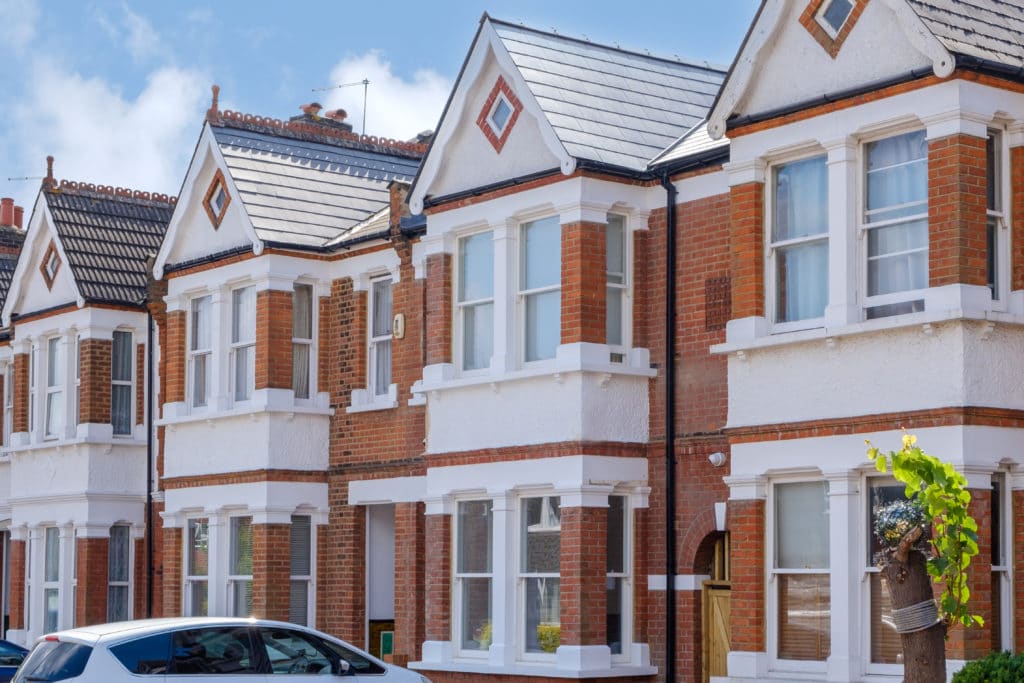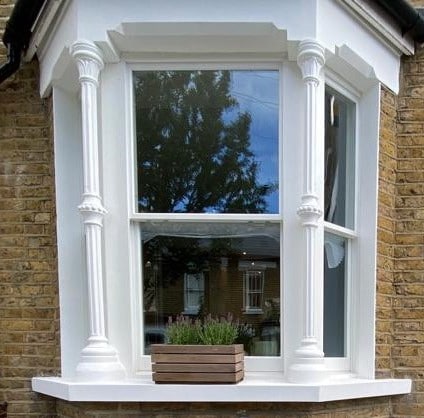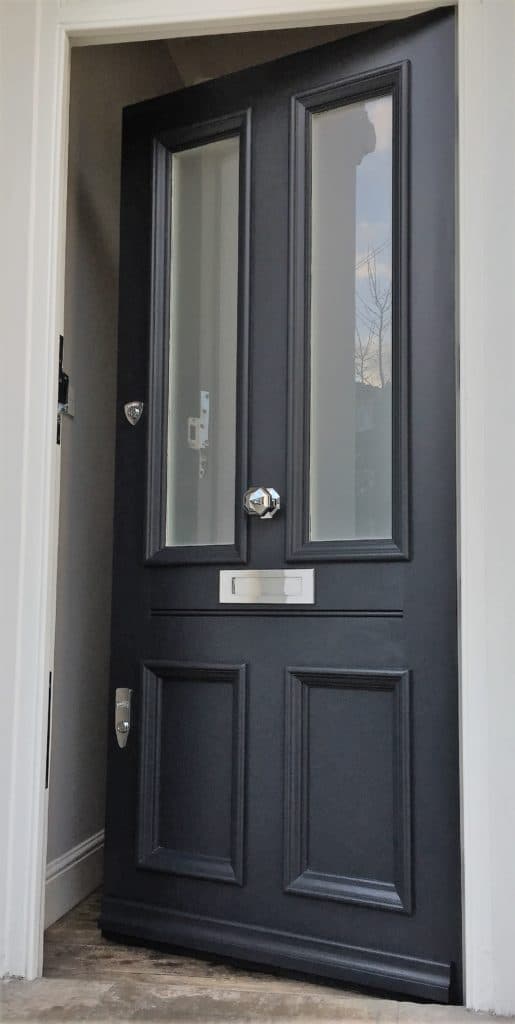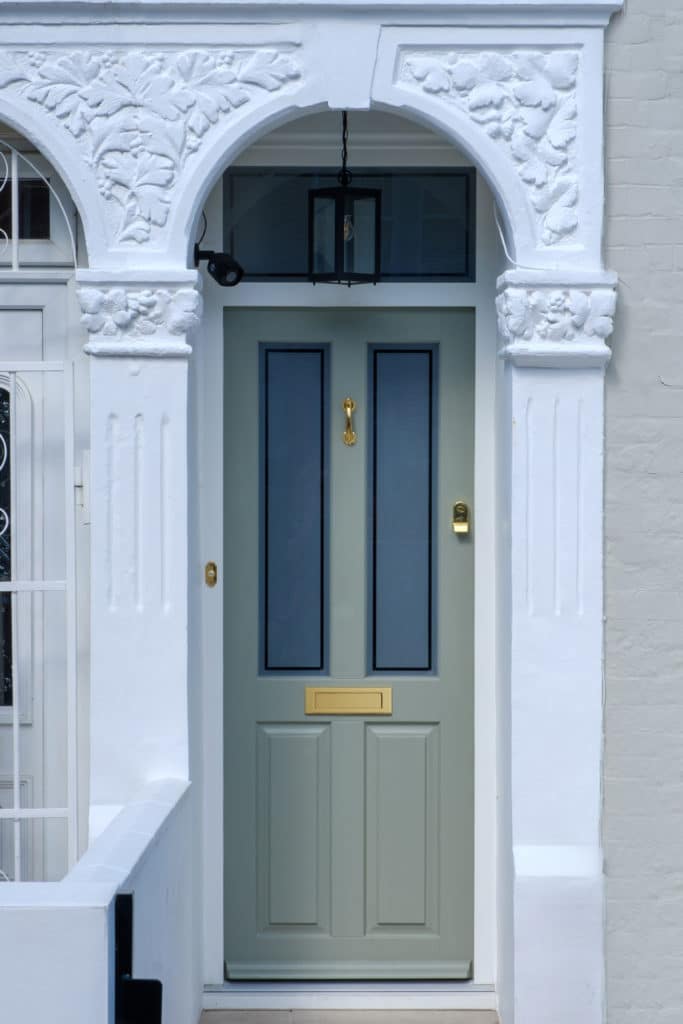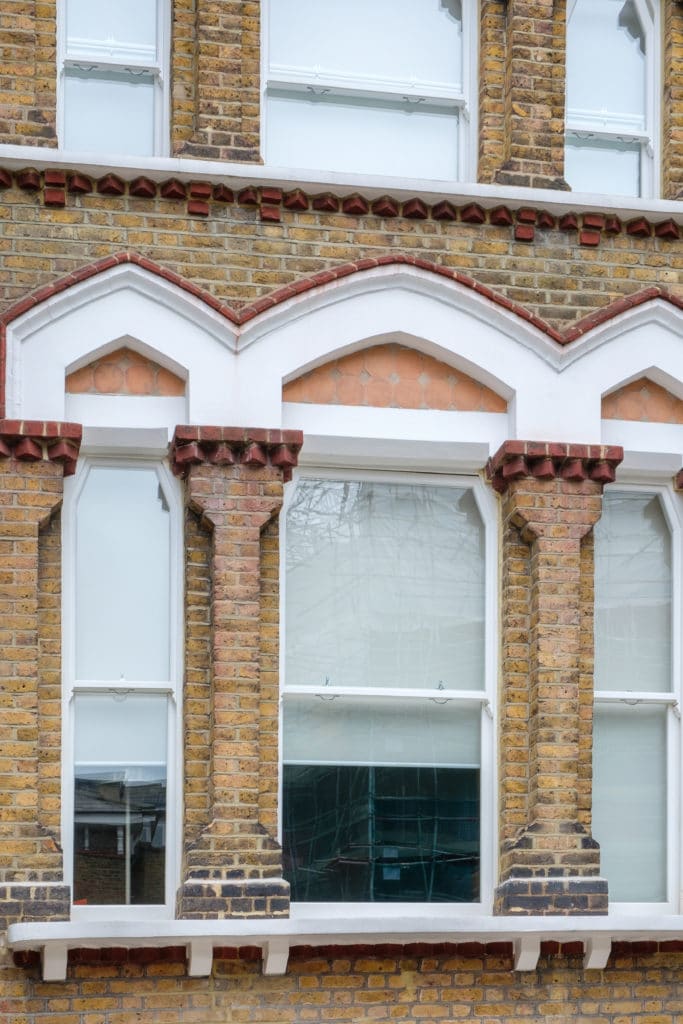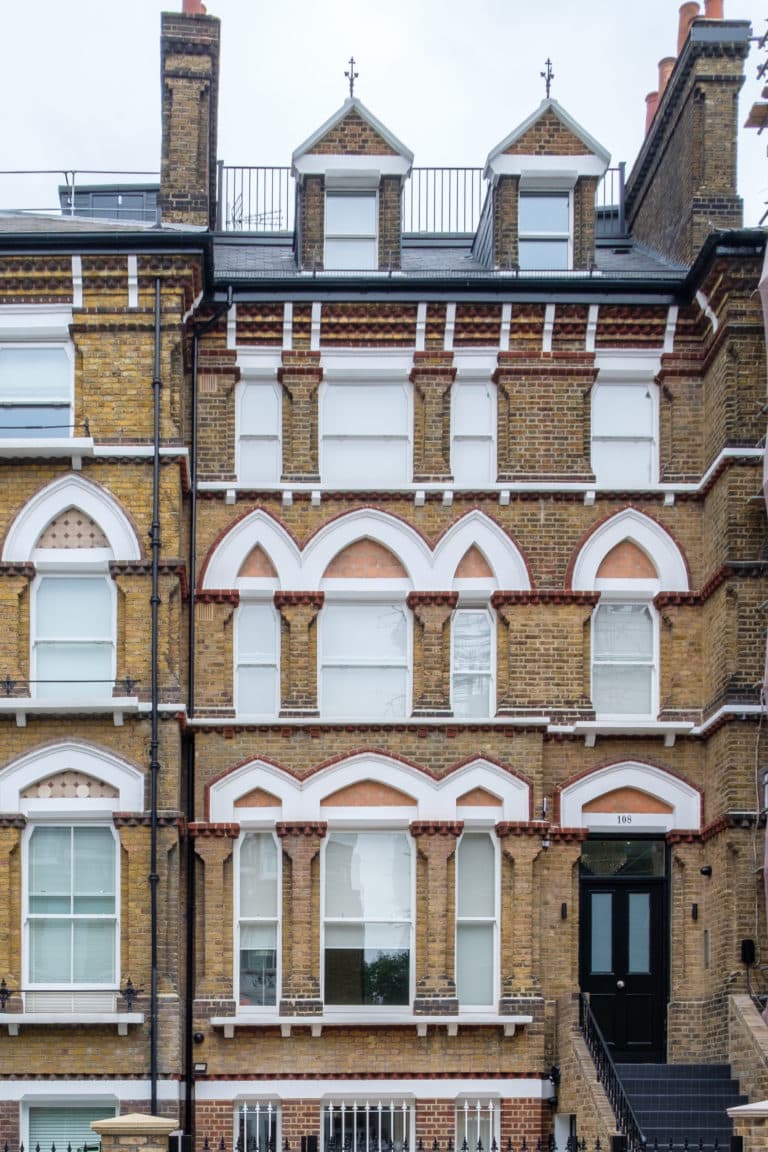Houses with wooden sash windows and doors in Great Britain which dated before 1914, which count for one third, are Victorian. The huge surge in building works which was experienced in the cities in the 1850s, 60s and 70s has been surpassed only by the ribbon project developments of the 1920s.
A British High Victorian style grew out of revivals of the past era’s. The fashionable Victorian town-dwellers were bored by the repetitive classical terraces and rows of plain soot-covered Georgian houses. The new Victorian town-dwellers wanted colour and animation. In a period of industrialization there was a new generation of new-found riches, self-made industrialists, showcasing their success, who in the construction of their houses showcased their achievements in aesthetic display. Very popular was the mock Gothic style as a romantic fantasy that suggested ancient lineage.
In 1879 William Young wrote in his book ‘Town and Country Mansions’, that in classical architecture “the convenience of the plan, and utility of arrangement, were sacrificed to the architectural effect…too often, instead of the design growing out of the plan”. Builders often randomly adopted elements of several styles – including Greek Revival, Romanesque, Tudor, Elizabethan and Italianate. A house could have half-timbered gables, classical wooden sash windows, redbrick and terracotta ornament, and a filigree cast-iron porch.
A true picture of the Victorian house had two extremes: the inventive large country houses and the meanly built flat-fronted terraces/rows of the poor. Between these two poles there are various recognisable types of properties: the early Victorian semi-detached villa, based on Regency models; the detached Italian style suburban villa with stuccoed ground floor.
The demand for better services and for more privacy expanded the size of the upper middle-class Victorian terraced/row house to unprecedented height and depth. This image of stuccoed enormity is striking in such London areas as Belgravia, Bayswater and Pimlico. The grand classical terrace enjoyed a final burst in Glasgow with the work of Alexander Thomson especially his Great Western Terrace of 1869. By the 1880’s, the trend toward suburban and rural dwellings among the upper middle classes was had now caused associated the with terrace/row to become déclassé: it was now associated with the lower orders, while the better-off tended to live in villas.
By the end of the 1860s, the right English Gothic returned to be yet again popular. At the same time the influential Queen Anne Revival style was initiated: its distinctive features include white-painted sliding sash windows, pretty balconies, curly gables and moulded brickwork or terracotta. There are beautiful streets in this style which can be seen around Sloane and Cadogan Squares in Central London.
Communication improvements had a big impact on Victorian house building. The fast growing building trade kept up to date with publications such as The Builder and The Building News, both created in the middle of the century. Well documented building construction books with excellent illustrations were widely available, and could be purchased in instalments by the less well-off tradesmen. Particularly popular were The Builders Practical Director; The Encyclopaedia of Practical Carpentry and Practical Masonry, all published between about 1855 and 1870. With industrialization this led to mass production. The canals and railways allowed for heavy materials to be distributed: cast iron from Scotland; terracotta from the English Midlands and the southwest peninsula; slates from Wales and Cumbria. No longer were houses necessarily built of the locally sourced materials, as had been usual in the past. Glass and bricks were now a lot less expensive than before. Identical terracotta ornament graced exteriors from Scotland to the southwest of England.
By the 1870s a new middleman took centre stage in the burgeoning building industry: the builder’s merchant. They acted as an agent for the manufacturers, supplying to the builder everything from kitchen ranges to bathrooms and knobs, illustrated in splendid catalogues which today give a fascinating insight into the late Victorian home.
Efficiency and health were both of great interest to middle-class Victorians, as displayed by the catalogues’ descriptions of improved sanitary wares. Ventilation was also important, not only as a way to clear smells from defective drains, but also to take away the noxious fumes from gasoliers and fires.
Cleaner air was one of the many benefits enjoyed by the thousands who left the cities and go further and further into the countryside. They were in search of healthy and affordable housing from which they could commute to work by railway. Yearning for the countryside mixed with the concept of suburbia to form a new ideal- the garden suburb, heralded in the 1870s in west London, where individually styled houses brought a welcome choice to green tree-lined streets.
Inside the house there were the public rooms where guests were received and entertained, the private bedrooms and dressing rooms, and the below-stairs servants’ rooms, which for the first time were out of bounds to the family. Such gradations were expressed, for example in the mouldings and construction of the fireplace which was made up of either marble, slate or timber. At the back of the house we had the morning room, was the feminine equivalent of the study, which was a masculine domain. As well as the dining room, larger houses would have their own breakfast room. An attempt to maintain a parlour was made even in the poorest of homes which often had an unlived-in air, as if waiting for a guest was important enough to justify its use.
Let’s now have a look at these exceptionally well-made timber windows and doors.
Wooden Windows in the Victorian Era
Improved glassmaking techniques produced larger stronger and less expensive single panes of glass which needed fewer glazing bars. As Victorian bespoke wooden sash windows become plainer, so their openings make increasing use of decorative brickwork, stucco and prefabricated terracotta. By the mid-19th century, sash windows have two small brackets or sash horns at each end of the bottom rail of the top sash. These sash window horns are to help strengthen the frame and support the heavier panes of glass. The abolition of the window tax in 1851 encouraged the greater use of glass, and the bay window with its wide centre sash and two narrower lights either side. Some later sash windows have small panes of glass and thick glazing bars forming the top sash to cut down glare from the sky, with a single sheet of glass below.
Sash casements with leaded lights, return during this period, especially with Gothic-style windows, or “Tudor” (square-headed) in modest houses. In grander houses, the decorative tracery at the tops of the arched windows reduced the amount of sunlight. This design feature served as a function of protecting interiors and furnishings from fading; on sashes, exterior blinds served the same purpose. Speculative builders, keen to incorporate the Gothic pattern popularized by John Ruskin’s ‘The Stones of Venice (1851)’, inserted sash or casement windows into rectangular openings, with an arch fashioned out of brickwork with many colours.
Victorian Glazing Bars
Timber glazing bar and beading profiles consisted of Ovolo glazing bar and a Lambs Tongue glazing bar. Victorian glazing bars were thinner and less busy than the thicker Georgian glazing bar.
Victorian Timber Doors
The porch to a Victorian house was designed not only to protect visitors from the weather but also to convey the social status of the occupants. A projecting porch implies greater wealth than one that was recessed.
Traditional wooden front doors in London are panelled and sometimes arched in a Gothic style. They were often green or wood grained. The exceptionally well made timber doors were glazed with upper panels or fanlights. This would allow extra light to enter the hallway. Catalogues were packed with examples of door knockers and knobs and, from the 1840s, letterboxes/ mailslots.
It was very important to the Victorians to insulate their houses against the cold. In smaller terraced houses, where there is usually an archway across the narrow hall, it was convention to hang curtains in order to retain heat. A curtain on a swinging pole, would hang behind a door to make a room warmer.
Internal London wooden doors are constructed in the traditional frame-and-panel manner. Doors leading to larger more important rooms can be up to 3 inches (7.5cm) thick with many wooden panels and applied timber mouldings and beading. Such features not only indicate the room’s importance, but the greater the density of wood the more effective it was as a protection against eavesdropping servants.
Woodwork in the Victorian Era
The use of wood for external decoration developed at a pace in the Victorian period. Oak had normally been used for durability outdoors, but it was expensive. Now, less expensive softwoods, such as pine, could be treated with coal tar or oil-based preservatives, and pressure treatment with creosote made them even more weather resistant. Patterns could be more easily shaped using pine which was easier to work with.
Most large joinery works used steam machinery, and machine sawing and planning made working with timber simpler and less expensive than before. Manufacturers developed extensive ranges of prefabricated functional an ornamental garden buildings, including conservatories, for dispatch by rail. These were delivered in components for immediate erection.
Trelliswork, very much a feature of the period, was delivered folded, concertina-style, and when expanded created very effective screens and panels. Dark creosoted shiplap fencing became an alternative to expensive brick walls; open palisade fencing was also popular. Garden entrance gates were painted dark green or white. They had solid lower panels and the tops were openwork panels formed by a variety of spindles.
